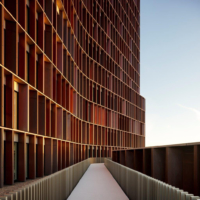Esitteet ja raportit
Either by the use of lacquers, wax polishing, or both.
The key is to clean them thoroughly, remove water, protect them and keep them dry, so:
- After cleaning dry thoroughly using a dewatering fluid such as WD40.
- Remove displaced water with forced warm air.
- Coat with a protective coating such as benzotriazole inhibitor, or a block co-polymer.
- Pack into benzotriazole treated paper lined wooden boxes. Moisture absorbent granules may also be used to keep the air inside the boxes dry.
When unpacked, remove the coatings with a phosphoric-based solution and dry them thoroughly.
Bordeaux mixture is prepared in various strengths from copper sulphate, hydrated lime (calcium hydroxide) and water. The conventional method of describing its composition is to give the weight of copper sulphate, the weight of hydrated lime and the volume of water in that order.
The percentage of copper sulphate weight to the weight of water employed determines the concentration of the Bordeaux mixture. A 1% Bordeaux mixture, which is the norm, would have the formula 1 :1:100, the first 1 representing 1 kg copper sulphate, the second representing 1 kg hydrated lime, and the 100 representing 100 litres (100 kg) water.
As copper sulphate contains 25% copper metal, the copper content of a 1% Bordeaux mixture would be 0-25% copper. The quantity of lime used can be reduced considerably. 1 kg copper sulphate requires only 0.225 kg of chemically pure hydrated lime to precipitate all the copper. Good proprietary brands of hydrated lime are now freely available but, as even these deteriorate on storage, it is safest not to exceed a ratio of 2:1, i.e. a 1:0.5:100 mixture.
In preparing Bordeaux mixture, the copper sulphate is dissolved in half the required amount of water in a wooden or plastic vessel. The hydrated lime is mixed with the balance of the water in another vessel. The two ‘solutions’ are then poured together through a strainer into a third vessel or spray tank.
Copper sulphate, because of its fungicidal and bactericidal properties, has been employed as a disinfectant on farms against storage rots and for the control and prevention of certain animal diseases, such as foot rot of sheep and cattle.
The first recorded use was in 1761, when it was discovered that seed grains soaked in a weak solution of copper sulphate inhibited seed-borne fungi.
The earliest recorded use of copper for conveying water is a water conduit in Abusir, Egypt, which dates back to 2750 BC and is still in a good state of preservation. Copper water pipes and cisterns were widely used by the Romans – examples can be found at the archaeological site of Herculaneum, destroyed by the eruption of Vesuvius in 79AD. At the beginning of this century, copper started being used again in Europe and North America.
Three. They are: Copper-Zinc, Copper-Nickel, and Copper-Silicon.
The exact cost of using copper alloys in aquaculture enclosures depends on multiple factors such as the cage size and the transportation of materials to the building site, and then of the cage to the farming site. Overall, the total cost is offset by the long-term cost savings associated with longer service life, decreased fish losses, lowered maintenance, etc.
Yes, this is covered in Def Stan 02-833. For extruded rods and sections of size 40mm and below, an anneal at 740°C plus or minus 20° followed by air cooling is carried out. This mandatory heat treatment is to eliminate phases which are likely to give rise to selective corrosion in sea water.
Using chemical treatment, any desired colour can be obtained. Specialist companies should be consulted to identify the correct product for a particular project.
Copper-Zinc is good for flexible mesh containment systems.
Copper-Nickel is good for rigid (e.g. welded) mesh.
Copper-Silicon is good where rigid mesh is needed, or where panels can have flexible connections.
Bronze has been used for centuries to create statues, and is still the first choice for modern, striking works of art. The most widely-used alloys for such objects are leaded gunmetals, such as CC492K and CC491K.
